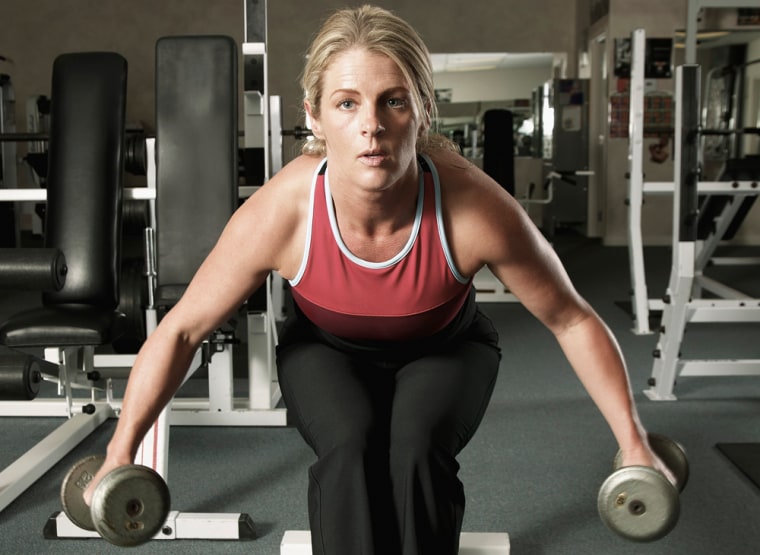Do you always have to max out with weights? Will a week off from the gym wipe out your fitness gains? And is it essential to wear shoes if you exercise in your living room? Smart Fitness answers your workout queries.
Have an exercise question? To e-mail us, click here. We’ll post select answers in future columns.
Q: I always hear that you have to max out when weight-training, but is that really necessary? I find that training to failure is pretty uncomfortable, and it discourages me from hitting the weights.
A: Common weight-training advice says to choose a weight that you can lift only for a set number of repetitions. So if you are doing 10 reps of an exercise, for instance, you would select a weight that you can lift just 10 times, but no more. In the exercise science world, that means you’ve “trained to failure,” muscle failure.
The idea is that you’ll build the most muscle if you hit the weights as hard as you can. Some people love that challenge; others, like you, find it to be something approaching torture.
So can you build muscle if you don’t max out? Of course you can, assuming you’re stimulating your muscles with some degree of difficulty and not just going through the motions. If you can breeze through a set, it’s probably not doing you much good.
Always training to failure may actually cause harm, says Len Kravitz, coordinator of exercise science at the University of New Mexico in Albuquerque.
“I encourage trainers to not always train clients to failure,” he says. “This may be a contributing cause to overtraining and overuse injuries.”
A safer approach is to mix up your strength routine, Kravitz says. So just as you should incorporate a variety of sets, reps and exercises into your program, you should also vary how often you train to failure. Certainly if training to failure if uncomfortable and preventing you from working out, do it less rather than more.
There’s no single best weight-training program for everyone. If you need help putting together a fitness regimen, consider consulting a trainer, even for a couple sessions. Be sure to factor in your current fitness level, your goals — and your desire to lighten the load a bit — when developing a plan that’s right for you.
Q: I’m a regular exerciser but my travel schedule for work can leave me sedentary for a week at a time. Do I lose my fitness gains during these periods?
A: An occasional exercise break — be it during a week off for work travel or some R&R on the beach — shouldn’t wreck your fitness routine, says Dr. Jeffrey Tanji, associate medical director of sports medicine at the University of California at Davis.
“It won't happen that fast,” he says.
And the break might actually do you some good. “It is not a bad thing to taper. Tapering allows overuse injuries to heal, and helps to prevent stress fractures, tendonitis and even staleness and burnout.”
An extended break, however, will send you spiraling toward couch-potato territory, and in much less time than it took you to get in shape.
“Life is not fair,” says Tanji. “Deconditioning is quick, and conditioning is slow.”
Well trained athletes such as triathletes and marathon runners can go from being in top form to deconditioned in as little as a month, he notes. But it can take them three to four months to get back into peak shape.
So while you don’t want to go too long without breaking a sweat, Tanji recommends treating yourself to four one-week breaks over a year, which comes out to a week of down time every three months.
Q: I do an aerobics video in the house around three times a week. Since I am in the house I just have sports socks on, and not my trainers. Can this do any damage in the long run to my ankles or legs, etc.?
A: Yes, you do run the risk of injury, says David Davidson, a podiatrist in Buffalo, N.Y., and president-elect of the American Academy of Podiatric Sports Medicine.
As he noted in a recent column, a good sports shoe can help stave off problems with feet, ankles, legs, the hips and back.
Sports socks and even carpeting on your living room floor don’t provide enough support and shock absorption, Davidson says.
Are you worried about wearing out the carpet? If so, consider a sturdy exercise mat.
